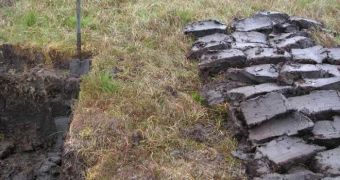When they first started drawing public attention on the potential effects of climate change, researchers also pointed out peatlands as an important source of carbon dioxide. A new study demonstrates that those early estimates of how much CO2 peat puts in the air were off by a wide margin.
It would now appear that these lands are capable of releasing a lot more of the greenhouse gas than initially calculated. The situation grows especially worse when droughts start affecting peatlands.
The reason why this study is so important is that these lands are mostly located in areas of the world that researchers believe to be at an increased risk of suffering from more droughts as a result of global warming and climate change.
Seeing how more CO2 in the atmosphere equals more rapid warming, it's easy to see how the situation could quickly degenerate. One of the few things that can be done to prevent this vicious circle from taking hold is keeping peatlands wet.
Thus far, this has helped block air from penetrating the material, and therefore removing the vast amounts of carbon dioxide it holds. Peat is filled with carbon-rich, decomposing plant matter. The chemical was stored by trees and other plants that have long since disappeared.
But prolonged drought over peatlands leads to reduced wetness in the land. Air rushes in, removes carbon dioxide, and then deposits it in the atmosphere. Peatlands are considered to be a massive CO2 reserve, just like perennially frozen soils called permafrost, in Arctic regions.
The new investigation was carried out by experts at the Bangor University, who published their results in the latest issue of the esteemed journal Nature Geosciences. Bangor experts Dr Nathalie Fenner and Professor Chris Freeman led the research effort.
“As our global climate and rainfall patterns change, our peatlands may not have sufficient opportunity to recover between these drought-induced episodes of CO2 loss,” says Fenner, the lead author of the new paper.
“What we previously perceived as a 'spike' in the rate of carbon loss during drying out, now appears far more prolonged – with a potential peak after the initial drought period is over,” the expert adds.
In addition to affecting the atmosphere, peat-released CO2 can also seep into groundwater as dissolved organic carbon, contaminating freshwater, and posing a health hazard to the animals, plants and humans that consume it.
Furthermore, peat also acts as a natural sponge, soaking up rain during heavy storms. Therefore, people living near such areas should expect to see more floods occurring in their area, as the lands lose their natural capabilities, EurekAlert reports.

 14 DAY TRIAL //
14 DAY TRIAL //